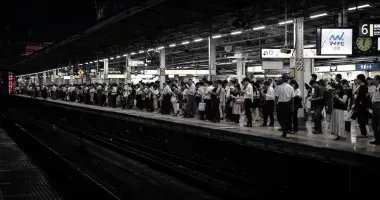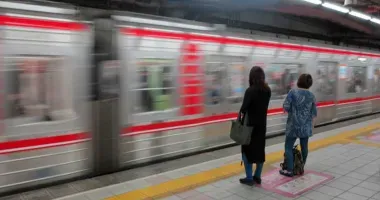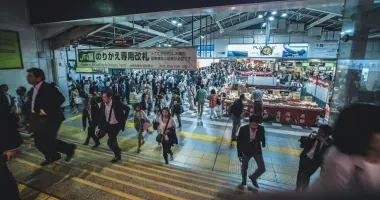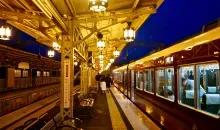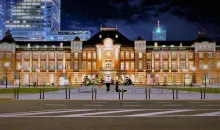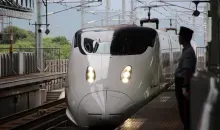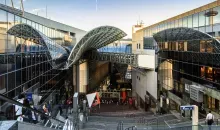Meijo Line Nagoya Subway
The Meijo Line is a circular, loop line of the Nagoya subway network running from Kanayama through Sakae, Motoyama, yagoto and Aratama-bashi stations.
The Meijo Line in Nagoya is one of the six main subway lines of the Nagoya subway system.
The Meijo Line, which is marked purple on subway maps, is a circle or loop line, larger than the over ground Osaka Loop Line in Osaka but smaller than the Yamanote Line in Tokyo (less than 2 hours away from Nagoya via Shinkansen bullet train). The Toei Oedo Subway Line in Tokyo is the only other subway loop line in Japan.
The journey time around the 26.4 km, 28 station loop is 48 minutes.
Parts of the Meijo Line first opened in 1965 as Line 2. The full loop was completed in 2004 and the Kanayama Station to Nagoya Ko (Nagoya Port) section became the Meiko Line.
Meijo Line Stations
Kanayama | Higashi Betsuin | Kamimaezu | Yaba-cho | Sakae | Hisaya-odori | Shiyakusho | Meijo Koen | Kurokawa | Shiga-hondori | Heian-dori | Ozone | Nagoya Dome-mae Yadan | Sunada-bashi | Chayagasaka | Jiyugaoka | Motoyama | Nagoya Daigaku | Yagoto Nisseki | Yagoto | Sogo Rihabiri Center | Mizuho Undojo Higashi | Aratama-bashi | Myoon-dori | Horita | Temma-cho | Jingu-nishi | Nishi Takakura






Notable Stations
After Nagoya Station, Kanayama Station to the south in Naka-ku is Nagoya's most important rail hub and a main station for the Centrair express train connecting to Chubu International Airport. Kanayama Station serves both JR and Meitetsu suburban trains with their respective entrances on either side of the main concourse. The Meitetsu lines connect to Toyohashi, Gifu, Inuyama, the Chita Peninsula and Chubu International Airport. Heading south east the next stop on the Meitetsu Line is Jingu-mae Station from where trains go either south on the Meitetsu Airport Line to Tokoname and Centrair or east on the Meitetsu Nagoya Line to Toyohashi via Narumi, Otogawa and Higashi Okazaki. On Japan Railways (JR) there are frequent connections to Ena, Nakatsugawa and Matsumoto in Nagano Prefecture, Ogaki, Gifu, Maibara, Handa, Gamagori, Toyohashi and on to Hamamatsu in Shizuoka Prefecture.
Ozone Station
Ozone Station is on the JR Chuo Line, which links Ozone Station to Tsurumai Station, Nagoya Station, Kanayama Station, Chikusa Station, and then north east to the outlying towns of Kasugai, Tajimi, Toki, Ena and Nakatsugawa.
Ozone Station is also the terminus for the Yutorito Line (ゆとりーとライン), which is a bus which runs on an elevated track to the suburb of Obata Ryokuchi and is the only guided bus line in the country.
Ozone is a terminus for local buses with services to Shin-Moriyama via Koshin, Midorigaoka Jutaku via Obata, Imba Station, and Fukiage via Imaike.
Sunada-bashi Station
Sunada-bashi is located in an unremarkable suburban area of town, close to a several home centers and malls serving the residents of many large blocks of social housing in the area. A ten minute walk south of the station is the free Historical Museum of Waterworks and Sewerage. Nearer to the station is the brick, Meiji era Old Nabeyaueno Water Purification Plant No. 1 Pump Station standing next to the modern Nabeyaueno Water Purification Plant.


